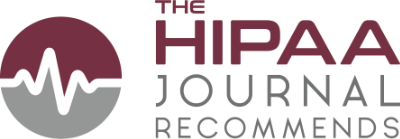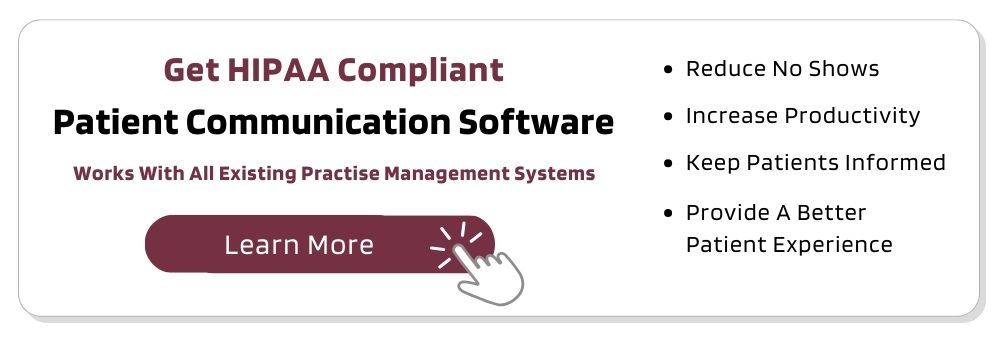Communication Tools in Nursing
There are several communication tools for nurses that can be used to improve interactions with patients, communicate more effectively with physicians, and ensure smooth handovers to colleagues. The use of these communication tools in nursing can help to improve patient outcomes, patient satisfaction, and reduce the potential for errors.
Effective Communication is Essential in Nursing
Effective communication is essential in nursing. Complex information must be conveyed between a nurse and a patient, the patient’s family members, and other members of the care team, often at times of great stress. Good communication between nurses and patients is critical for providing high quality, individualized care. The attitude of medical staff and their ability to communicate effectively are two of the most important factors that contribute to a good patient experience and high levels of patient satisfaction. However, when there are breakdowns in communication in nursing the consequences can be grave.
Most nurses will have a good baseline level of communication and interpersonal skills, but there will be plenty of room for improvement. By working hard at developing the required communication skills, nurses can improve job satisfaction, morale, and ensure patients get the best possible level of care.
Strategies and Communication Tools for Nurses
Listed below are a selection of useful strategies and communication tools for nurses to help them improve patient engagement, obtain important information during patient interactions, communicate more effectively with members of the care team, become better communicators, and reduce the chance of medical errors.

HIPAA Compliant
Patient Communication
Software
Keep Patients Informed,
Reduce No Shows & Increase
Staff Productivity
Rectangle Health’s Patient Engagement Software Is Used By 1,000s Of Healthcare Providers & Easily Integrates With All Existing Practise Management Systems
Your Privacy Respected
HIPAA Journal Privacy Policy
The SBAR Nurse Communication Tool
SBAR is one of the most common communication tools in nursing for structuring conversations. SBAR is an acronym of Situation, Background, Assessment, Recommendation. It is a tool that is used for structured communication to ensure that information is transferred accurately between two people, such as during a shift transfer for example.
SBAR uses prompt questions in four areas to guide a conversation and ensure efficient transfer of concise information, as detailed in the example below:
Situation: I am (nurse name) on ward (x) calling about (patient name), because (reason).
Background: Provide a brief description of important background information. E.g. John Smith was admitted yesterday with chest pain and has heart failure.
Assessment: Provide your assessment of the patient: E.g. I have assessed the patient and I am concerned because he looks very unwell, I am not sure what the problem is, but his condition is deteriorating.
Recommendation: Provide your recommendation. E.g. I need you to come and see the patient in the next 15 minutes. Is there anything I should do in the meantime before you get here?
The initiator of the communication should also get the receiver to repeat key information to make sure it has been understood.
The BATHE Protocol
The BATHE protocol, like SBAR, serves as a prompt for four questions. BATHE is an acronym standing for:
Background – What is going on in your life?
Affect – How is that affecting you?
Troubles – What is causing you trouble about the situation?
Handling – How are you handling it?
Empathetic Statement – E.g. That must be awful for you and very frustrating.
This interaction is likely to take just a couple of minutes and five minutes at most. The purpose is not to resolve the issue or even to provide treatment. The aim is to reassure the patient and ease distress and strengthen the relationship between the nurse and the patient. This technique has been trialed in an outpatient setting and has been found to improve the patient experience.
Ticket-to-Ride
This is one of the most widely used communication tools in nursing for patient handovers. For example, when a patient is sent for an X-ray, the nurse hands the patient off to the transporter and provides information about the patient. For example, if the patient needs and IV or if they will need a wheelchair. This ensures that the person taking charge of the patient, even if only for a short period of time, has the information they need to keep the patient safe.
Hourly Rounding
Hourly rounding, as the name suggests, involves completing a visit to each patient’s room or bedside once an hour to check they are OK and to see if they need anything. This task can be completed by different members of the team. Finding the time to complete this task may seem difficult but being proactive and addressing patient needs before they become urgent can save a considerable amount of time and make patient care easier for the nurse. Hourly rounding also improves the patient experience.
Patient Teach-Back
Patient teach-back is an effective communication strategy for ensuring the patient has understood the information provided by a nurse. In short, the nurse explains a set of instructions or provides health information to the patient and then asks the patient to explain that information back to the nurse in their own words. This approach helps the patient take the information on board and lets the nurse know if the patient has understood what has been said to them. Nurses should explain to the patient that this is not a test, rather it is one of the communication tools in nursing that helps nurses determine whether they have explained things clearly.
A Useful Self-Check Checklist
There is another important aspect to effective communication that should not be overlooked, and that is the mental and physical state of the nurse. There are many different factors that can affect the ability of a person to communicate effectively, make correct decisions, and avoid errors. One useful self-checking exercise that was devised by TeamSTEPPS is a checklist called I’M SAFE, which stands for Illness, Medication, Stress, Alcohol/drugs, Fatigue, and Eating and elimination. If any of the factors in the list is an issue – E – not eaten or A hungover from too much alcohol for example – that information should be communicated to colleagues, as each of the items in the list can increase the potential for errors.
Technological Communication Tools in Nursing
Mobile devices have been embraced by the healthcare industry and these devices can be valuable for improving communications with patients. Some U.S. hospitals, the University of San Francisco Medical Center for example, have purchased tablets for use at patients’ bedsides. The tablets are used to provide patients with information about the healthcare workers on their care teams, as well as for providing important health information to patients. Staff can assign patient education videos to patients based on the health problems they are experiencing. The devices can also be used by patients to send information to nurse stations. Rather than simply relying on nurse call lights, patients can use tools on the tablets to explain why they need attention.
HIPAA-Compliant Text Messaging Platforms
One of the most beneficial technical communication tools in nursing, and healthcare communication in general, is a HIPAA-compliant text messaging platform. This is the healthcare equivalent of consumer instant messaging platforms such as WhatsApp. These platforms are fully compliant with HIPAA regulations and incorporate a range of features to improve communication between nurses, patients, doctors, and other members of the care team.
These platforms are used to send essential information about patients to members of the care team, including test results, medical images, and information about patient conversations. These nursing communication tools can be used to instantly contact specific members of the care team, arrange consults, and accurately pass on all relevant information to other nurses during shift transfers. They also allow nurses to check in with patients after a hospital stay and have 1-to-1 or group chats either by text, voice, or video call. Healthcare organizations that have adopted this communication tool report improvements in efficiency, productivity, patient engagement, patient’s satisfaction, as well as shorter hospital stays, faster patient throughput, fewer medical errors, and improved patient outcomes.
FAQs
Why is effective communication essential in nursing?
Effective communication is essential in nursing because complex information must be conveyed between the nurse and the patient, the patient’s family, and other members of the care team, often in stressful situations. Effective communication is critical for providing high-quality, individualized care, ensuring patient satisfaction, and reducing potential for errors.
What is a HIPAA-compliant text messaging platform?
A HIPAA-compliant text messaging platform is a secure healthcare communication tool that allows the instant transmission of patient information, including test results and medical images. The platforms can improve communication between nurses, doctors, and other members of the care team, and be used to send secure text messages to patients in the form of a link to a secure portal.
What does the acronym SBAR in nursing stand for?
The acronym SBAR in nursing stands for Situation, Background, Assessment, Recommendation – a communication technique that helps healthcare professionals communicate quickly, efficiently, and effectively. The technique – when used properly – ensures patient information is transferred accurately between members of a health care team.
How does the BATHE protocol aid patient communication?
The BATHE protocol aids patient communication by prompting four questions and an empathetic statement intended to reassure the patient, ease distress, and strengthen the relationship between a patient and healthcare provider. The acronym stands for Background, Affect, Troubles, Handling, and Empathy, and has been found to improve the patient experience in Emergency Rooms.
What HIPAA Rules apply to communication tools in nursing?
All HIPAA Rules apply to communication tools in nursing if the tools are going to be used to collect, receive, maintain, or transmit PHI. This means that not only do communication tools have to be configured to comply with the Security Rule (and – where appropriate – a Business Associate Agreement signed with the technology vendor), but the tools must also be used in compliance with the Privacy Rule – for example, only for permissible uses and disclosures which are limited to the minimum necessary where applicable.





